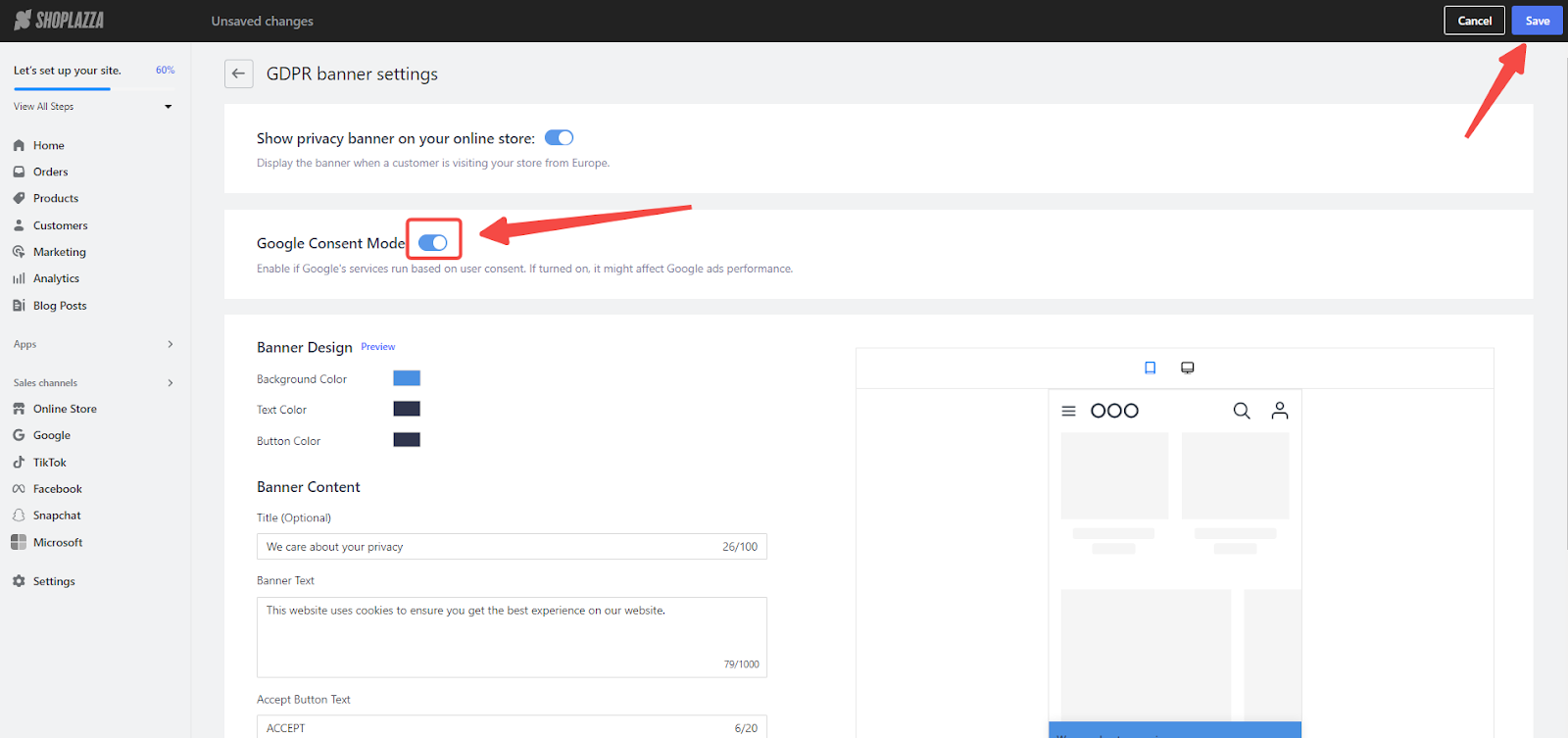In response to the Digital Markets Act (DMA) , a significant EU regulation focusing on personal privacy protection set to take effect on March 6, 2024, businesses that utilize Google's advertising services within the European Economic Area (EEA) need to act promptly. This law mandates obtaining user consent for advertisements to maintain their effectiveness. Adopting Google Consent Mode is essential for your business to comply with the DMA requirements, safeguarding your advertising strategies and ensuring adherence to regulations. This guide is designed to help your business seamlessly align with these new mandates.
Understanding Google Consent Mode
Google Consent Mode modifies how cookies track customer data based on user consent. If a user declines the use of advertising or analytics cookies, Consent Mode automatically adjusts third-party code behavior to prevent reading or writing cookies for advertising or analytics purposes.
Who should implement Google Consent Mode
Your business needs to implement Google Consent Mode if:
- You use Google for advertising.
- Your operations extend into the EEA , which includes a specific list of countries.
| Belgium | (BE) | Spain | (ES) | Hungary | (HU) | Slovakia | (SK) |
| Bulgaria | (BG) | France | (FR) | Malta | (MT) | Finland | (FI) |
| Czechia | (CZ) | Croatia | (HR) | Netherlands | (NL) | Sweden | (SE) |
| Denmark | (DK) | Italy | (IT) | Austria | (AT) | Germany | (DE) |
| Cyprus | (CY) | Poland | (PL) | Iceland | (IS) | Estonia | (EE) |
| Latvia | (LV) | Portugal | (PT) | Liechtenstein | (LI) | Ireland | (IE) |
| Lithuania | (LT) | Romania | (RO) | Norway | (NO) | Greece | (EL) |
| Luxembourg | (LU) | Slovenia | (SI) |
Setting up Google Consent Mode
1. Privacy app installation: Begin by installing the Customer Privacy app to enable GDPR banner settings. Detailed guidance is available under Customer privacy | Privacy management.
2. Activate Google Consent Mode: Within the GDPR banner settings, turn on Google Consent Mode and Save your changes to apply.

Verifying Google Consent Mode
1. Use Google's tag assistant: Start by accessing the Tag Assistant and selecting the Add domain to initiate the process.

2. Homepage verification: In the popup, enter your store's homepage URL and click Connect to proceed.
Note
Verification requires a European IP address to properly display the privacy banner.

3. Tag connection confirmation: Look for a popup at the bottom right corner of your store's homepage indicating a successful tag connection.

4. Tool verification: Return to the Tag Assistant to confirm the tag's connection to your store and click Continue to close the popup.

Understanding consent mode implications
- Initial visit: Visit your storefront with a European IP to see the privacy policy banner at the bottom of the page.

- Consent status: If the privacy banner's accept button has never been clicked, the Consent section will default to "Denied".

- Consent update: Clicking the accept button changes the Consent status to "Granted", with this choice being remembered for future visits.

Following these guidelines ensures your business adheres to the DMA's privacy protection laws and maintains the effectiveness of your advertising within the EEA. It's essential to complete each step thoroughly and verify that Google Consent Mode is correctly implemented to provide a seamless user experience while complying with privacy regulations.



Comments
Please sign in to leave a comment.